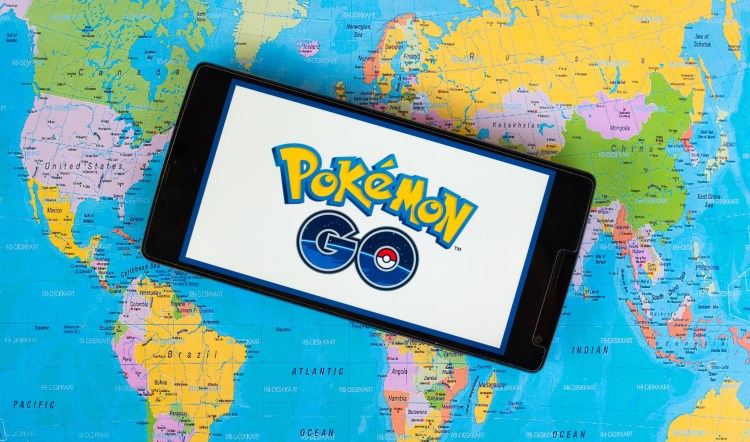Nearly a month since its release, and Pokémon Go is still going strong. We now know how to expand our Pokédex with rare Pokémon, but here’s what we don’t yet know: How can Pokémon Go avoid being just another mobile gaming craze-and-fade scenario (hello, Angry Birds!), and how can the Pokémon Company and Niantic (which developed Pokémon Go), create a sustainable business model that will keep players coming back — and paying — for more, without corrupting the integrity and spirit of the game?
It seems likely that the answer is subscriptions. And it’s seeming increasingly likely that Pokémon Go could become one of the first mobile game apps to successfully test the potential of selling subscriptions in Apple’s App Store.
As announced its most recent World Wide Developers Conference (WWDC), Apple is now permitting subscription sales across all categories, including games. Previously, only specific categories of apps could sell subscriptions — so this is a whole new (Poké)ball game.
Not only is Apple permitting subscriptions, it’s also giving developers incentives to use them: In the first year of an app’s subscription, Apple earns a 70/30 revenue share, but after a year, the new revenue sharing model calls for a revised split of 85/15.
As Phil Schiller, Apple’s senior vice president of worldwide marketing, said the push toward Subscriptions 2.0 (as Apple is internally referring to this new rollout) was prompted because the iPhone company “recognize[s] that developers do a lot of work to retain a customer over time in a subscription model, and we wanted to reward them for that by helping them to keep more of the revenue.”
A game like Pokémon Go with its huge following seems like it could potentially be a good fit with the subscription model, helping it to parlay Pokémon mania into a longer term customer strategy — one that is based on ongoing relationships and more predictable recurring revenue.
But only if it can prove its long-term value to players.
Pokémon Go is free to download and free to play, aka the “freemium” model. Where the money comes from is in app purchases, microtransactions from players who are willing to pay real money, in a virtual world, for game coins which can then be used for tools to help you lure and capture Pokémon.
Since launching, Pokémon players have been shelling out approximately $1.6M every day for these in-app purchases. Clearly this is a big score, but it’s not reliable recurring revenue. What happens next week when a new game comes out, or when players have already purchased enough coins to fast-track their way to a full Pokédex?
Sure, 25 million daily active users (in the U.S. alone!) is an impressive number — and the number of active users may continue to go up for a while as word spreads and the app is launched in other areas — but it’s very likely that the numbers will drop over time. What today is 25 million daily active users may soon turn into 25 million monthly active users, possibly with only 2-5 million daily active users. And of those 2-5 million daily active users, only a very small percentage will be power users who are willing to pay for in-app purchases. So this current $1.6M a day in revenue is undoubtedly going to go down. It’s just not predictable.
That’s where selling subscriptions could come into play, in various ways. If the game keeps improving, they could offer a blanket subscription for access, pay to play. Ongoing new enhancements and features — rather than simply pay-to-win pricing — would likely be a good draw for this.
But offering a subscription doesn’t just have to mean putting a monthly or annual price on playing the game. A better choice may be to introduce a variety of subscription pricing plans that respect the spirit of the game and its subscribers while at the same time successfully monetizing these relationships. There are numerous feature sets that could be priced and packaged in interesting ways. For example, subscription plans that offer:
- Battling your friends
- Extra backpack and Pokédex space
- The ability to collect gym badges
- Aesthetic enhancements like different outfits or icons
- More Pokémon (in addition to the original 151 you can currently catch)
- Exclusive items available only to subscribers
Pokémon Go already has a strong customer base, but it’s how they monetize the game that ultimately will be the key to developing an even stronger customer base, and will help decide their fate. If the Pokémon Company and Niantic want Pokémon Go to be more than just a fad, they need to think about monetizing through subscriptions and having a longer term customer strategy.
Whether Pokémon Go, with its millions of addicted players, can successfully make the shift to the subscription model, will no doubt be something that other app developers — and Apple — will be watching very, very closely.
Robert Hildenbrand is SVP Global Services at Zuora, a subscription commerce, billing and finance company. He’s an expert in line of business management, consulting service delivery management, operational service delivery, and client relationship management.
VentureBeat's mission is to be a digital town square for technical decision-makers to gain knowledge about transformative enterprise technology and transact. Learn More

